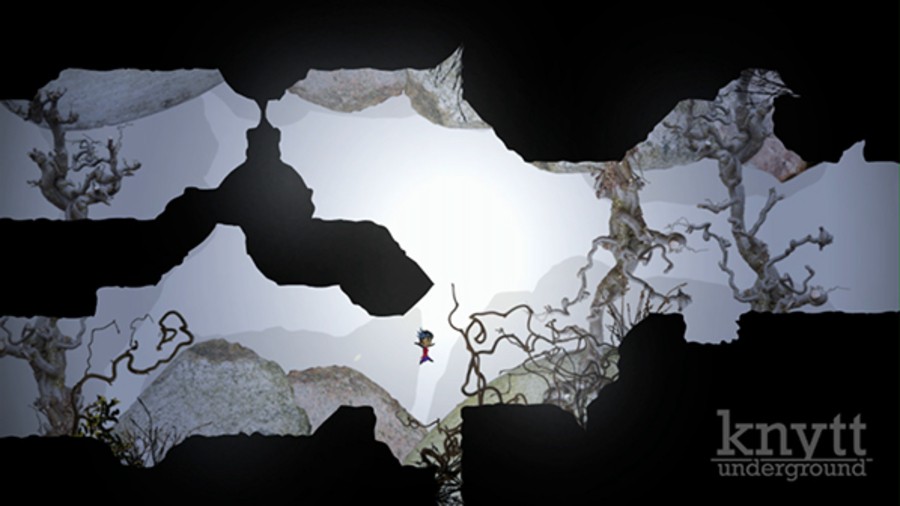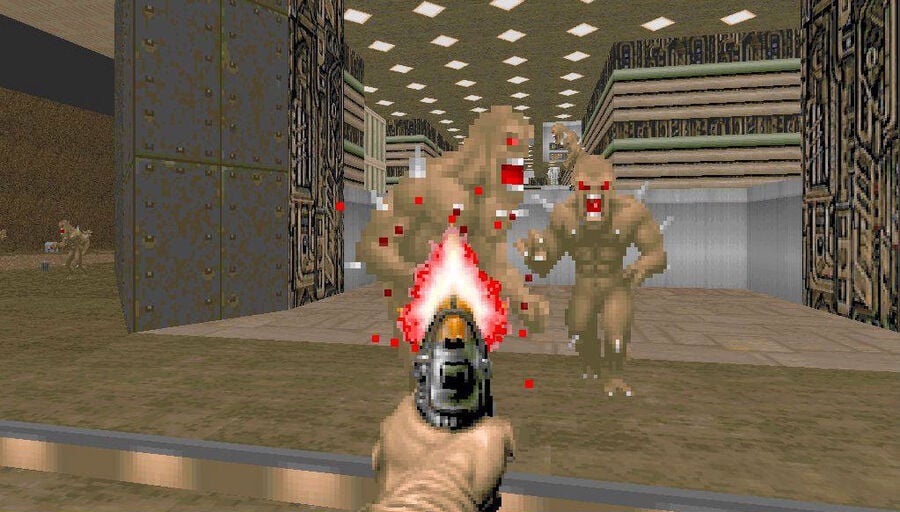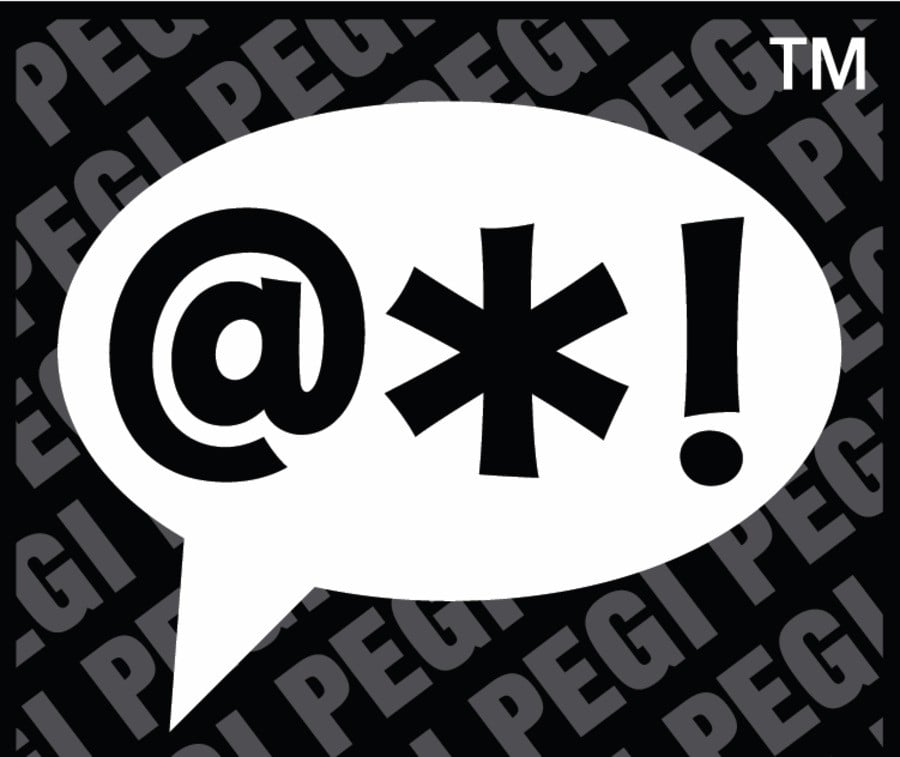
Just last week we published the first part of our chat with Nifflas, in which the game designer — full name Nicklas Nygren — outlined many of the ideas that form upcoming Wii U eShop title Knytt Underground. We learnt a great deal about the complexity and depth that the title is striving for, in the process forming an understanding of Nifflas' vision and philosophy driving what could be a relatively unique experience for Wii U owners.
Slightly later than promised we bring you the second part, in which we chat about design and moral principles that drive gameplay, question marks over the accuracy of age ratings and why Nifflas opts to work with publishers, such as Ripstone, rather than go it alone.
What can perhaps be overlooked, or ignored, by some gamers and games writers are the personal stories behind games. From Triple-A blockbusters with hundreds of staff to Indie efforts with just a few people involved, a lot of projects are the result of painstaking hard work. That doesn't give games a free pass from criticism, naturally, but it can be forgotten that even the smallest projects can be the result of great endeavour; they don't simply appear from thin air.
The journey of small, independent developers can often be the most interesting, as careers are formed from the humblest beginnings. To produce an entire game with so little help and resource is no small task, which perhaps explains why download games in particular show such an individuality and fresh approach — titles like Knytt Underground don't go through proof of concept meetings in an office full of executives, but serve as the delivery of a personal vision.
Nifflas, for his part, began making games as a hobby, socialising with like-minded individuals before realising, after years of producing small projects and some free games, that it could be a means of earning an income.
I guess I just like making games, it’s a hobby that just kind of escalated somehow. Right now… normally I don’t work in a set team, but I just do games and ask friends to do music, and people in my community help me out with various things. So I have a community that helps me fix all the spelling errors in the game and so on; it’s really cool to have all these people. And then sometimes I work on one game with a certain team. It’s very fun that way.
I didn’t expect it to be my job in the beginning; I just did games because it was fun to do. It took me several games before I even considered the option of selling them, but it’s around when I made NightSky, I really understood that I wanted to do this full time. Then making a money was like a tool.

The description of money as a tool to continue a hobby seems apt for Nifflas. When chatting about what stands were fascinating him at the Eurogamer Expo / EGX, he didn't talk about the new Nintendo games, PS4 or Xbox One stands, but name-dropped the "Doom Piano"; it was literally a piano with a monitor playing the original Doom on PC, but with fixed keys mapped to movements and shooting. It was peculiar and not particularly musical, and a case of developers pursuing a project because they can. In many respects that best represents the development spirit often found within the download game community.
When quizzed about his policy of utilising publishers rather than self publishing, Nifflas rather candidly states that he's "terrible at marketing" and "can't do that stuff", while appreciating the amount of work that goes into the process. It's all about developing interesting experiences rather than paperwork, which perhaps explains why he's exploring projects with the "crazy people" — a term expressed with affection — at KnapNok Games, the team behind quirky Wii U eShop party game Spin the Bottle: Bumpie's Party. It is a Wii U project under consideration, with the developer telling us the collaborated team is "really exploring what you can do on the device".
As for Knytt Underground, its role as a very personal project becomes clear with its mostly non-violent approach, with only one-shot weapons — which sound rare — being used to destroy robots. In fact, Nifflas makes clear that violence against living creatures is a gaming activity he strives to avoid.
There’s one power to shoot a single bullet to attack an enemy, but usually when you have to use that there are perhaps three enemies, so you just have to think about which one it’s smartest to take out. But it’s not the priority of the game, and it has to be robots because I want my game characters to be relatable, nice characters that behave like people; so it doesn’t make sense to have someone going around killing everything.
So in Knytt Underground I got around it by making all of the enemies robots. If it would have been like Knytt Stories or Knytt, where the enemies are other creatures that are dangerous, I would never have the option of killing them.
And yet, intriguingly, the European release is likely to be accompanied by a PEGI 16 rating. As it transpires it's all about bad language in the script, which Nifflas wasn't willing to remove and compromise due to its role in the game. It was explained that the player has control of two sprites, Dora and Cylia, and they have different personalities; when dialogue choices come in the form of choosing one of these sprites, Cylia is the strong-willed, angry character that Nifflas admits "pretty much single-handedly raises the age rating". It's worth reproducing the interview transcript here, as Nifflas and Ripstone explain how their combined principles brought a 16 rating to a title that, aside from this language, seems entirely suitable for gamers of any age. At this stage we're chatting to Nifflas as well as Phil Gaskell and Leo Cubbin of Ripstone.

Nifflas: Also, the point of this, for example at one point you meet up with this really sexist asshole, who says really stupid stuff that’s not OK to say. You get to send one of your characters: you know if you send Dora she’s going to talk sense to him, if you send Cylia she’s going to insult the s**t out of the guy; the thing is you’re given the option that you probably should take, but it’s not really satisfying. You also have the option of this really good character that’ll insult this guy so much, and it’s so nice to pick that one. It’s quite a choice, which one is the better?
I really want to try to come up with these scenarios where the answer isn’t that clear, it should always be up to the player to decide. The game should never tell you what’s actually the better choice.
Phil Gaskell: From a publisher’s point of view it was quite a surprise, as well. The game has a certain kind of look that’s quite soft and engaging for a particular audience. But then you read the script, I remember when I first read the script, I was like “whoa, we’re going to be saying this”. But, Ripstone are all about support guys like Nicklas, that’s his vision so we went with it. There’s nothing in there that prevents an age rating, we weren’t making a mature game but we wanted him to make the game he wanted to make. So we did, we supported him and it’s got a 16 rating!
Nifflas: It’s pretty crazy. I’m not sure I agree with the age rating itself, because it’s strange in games that you can get away with lots of sexism and bad stuff like that, but as soon as you use the work f**k it’s PEGI 16.
NL: Perhaps it’s not a perfect system.
Nifflas: People worry about the wrong things in my opinion — swear words are this thing that do very little damage, but it’s like “no, danger, children”. I wouldn’t say I agree with the age rating and it should be lower; the system is a bit wrong. I would definitely suggest that people younger than the age rating play the game. Am I allowed to say that? (laughs).
This is not the opinion of Ripstone!
Phil Gaskell: You’re the creator, you’re allowed your opinion!
NL: Is that a concern for you, though, that the age rating will negate some of the audience? Just based on the fact people will consider the look of it and wonder about the content?
Phil Gaskell: I think age ratings exist to inform parents. If you’re really bothered about what your kids play you should play it first and decide, yourself, if it’s appropriate. I know Leo’s youngest son is 12, but he checks and sits with him when he plays games and if it’s inappropriate stops it. It’s up to you, really.
Leo Cubbin: And like Nicklas I don’t think language is the problem.
Phil Gaskell: It’s not something they’re not exposed to in everyday life in the playground. So, we adhere to age ratings because they’re important, but I don’t think it’ll affect the game in particular.
It's an interesting debate, even if the publisher isn't expressing concern about the age rating reducing sales to younger gamers. The question can certainly be raised whether bad language is penalised more than issues such as sexism, and considering the non-violent approach of the game the PEGI 16 rating seems out of place with the bulk of the game's focus.
Based on our time so far with Knytt Undergound and our conversation with Nifflas, we're certainly interested in seeing the result of his Wii U explorations with KnapNok Games, assuming it makes it to market some day. In a gaming landscape full of violent games, meanwhile, a title that avoids destroying anything but robots is welcome, even if robust language means it falls foul of age rating boards.
Knytt Underground may be one to watch on the Wii U eShop, unless expletives are off the table on your system, of course.





Comments 7
Yeah, I've got to disagree with the decision on the cursing. Had my eye on this game. My 8-year-old and 4-year-old love Knytt Stories. I'm not going to start actively sharing words that offend the people around them and act as vessels of hatred, anger and mockery at a young age. I agree that the words themselves are silly and innocuous, but the use of them in this game, as in all language, is probably full of intent. Vulgarity and base instincts aren't really what I want my children spending their time with even as they grow up.
I'm all for addressing real issues with balance and intelligence and even more for finding ways to introduce those sorts of issues to kids carefully at a young age, but this is just a shame. My impression from what little I've seen and from reading reviews is that two sides presented on issues are usually absurd and the cursing adds nothing that more clever language couldn't express more powerfully and potentially humorously.
Mostly, it limits my ability to enjoy this game whose platforming mechanics and mood look to match his earlier games. (Can't play many "mature" games as I prefer to spend as much time as possible with my kids.) I know it's a meant to be a "personal" game but to me, personally, it's just a big waste. I don't understand why more games don't offer a cleaner version as an option. Especially when we are talking about text-only here.
So has this actually been up or about 4 hours and nobody has commented on it yet? Guess they won't have to worry about the rating
And just to clarify, there isn't only a couple uses of the F word where it may go unnoticed, it's repeated. Alot. And its never written as f@#$ its always spelled out. And it's always written on screen not voiced so younger kid swill be reading it if you let them, It's only 1 word, but it is used alot. And in the US it's a big no-no. Maybe not as big a non-no as "the N word" duhn duhn duhn but it's still frowned upon. Well unless you're a stand up comic.
I'm actually really surprised Nintendo isn't making them edit it at all. At least changing the actual letters of u-c-k into symbols of some type. If I were the artist I wouldn't want it edited either, just surprised it wasn't.
Edit: Well there weren't any comments.
Sometimes games aren't made for children, he made the decision to target this to 16+ It's too bad for young kids but it's his game. Sadly my bathtub moonshine is too potent for children too.
I'm not a huge fan of swearing or violence just for the sake of it. Sometimes it works and get's the point across but in a lot of other cases it's done to impress 14 year old boys. I haven't played this so I have no idea how it comes off.
It is rated 12 in Germany
You put the F word in it and then complain about the age rating being too high and that it is okay for kids and the age rating is wrong. That's just stupid, don't pretend your making a clean game and making something kids can play when when your not. If you want to make a game that's clean then make it clean, I don't think it's ever necessary to swear. So make it clean if you want it clean, instead of complaining when your game gets a high age rating because to put clearly offensive content in there
@Jaz007 did you read the whole article? I think your comments are pretty ridiculous in light of what Nifflas actually said
@aaronsullivan agreed.
Show Comments
Leave A Comment
Hold on there, you need to login to post a comment...